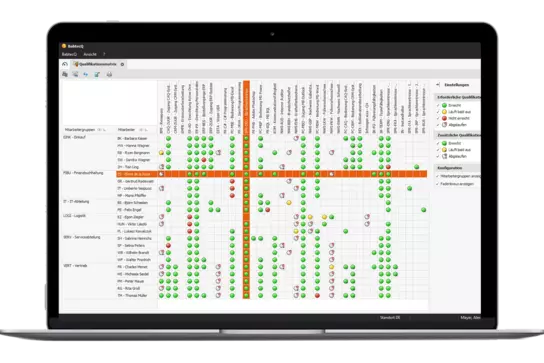The competence matrix is mainly used in the HR department. With its help, job advertisements are written and vacant positions are filled in a targeted manner. In addition, there is added value for supervisors: the transparent qualification profiles make it easier to plan the further development of employees. This development of competencies, in turn, also affects the management – because the strategic goals pursued can only be achieved with certain competencies of the workforce.
In addition, the qualification matrix can also be seen as part of quality management: DIN EN ISO 9001:2015 and other standards require proper qualification management. But what does this term actually mean exactly? The quality management standard stipulates that required competencies must be determined and documented for the activities of employees that influence the performance of the quality management system. In addition, it must be ensured that employees have or obtain all the qualifications they need to perform their jobs.








Comments
No comments